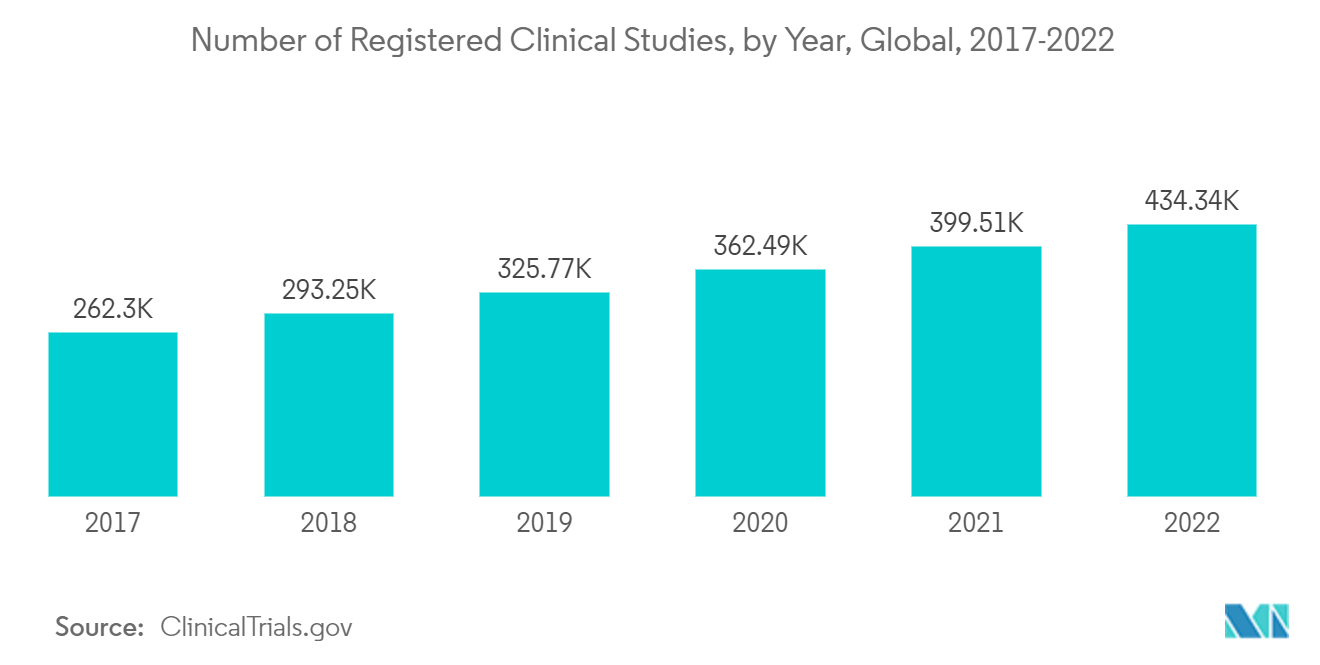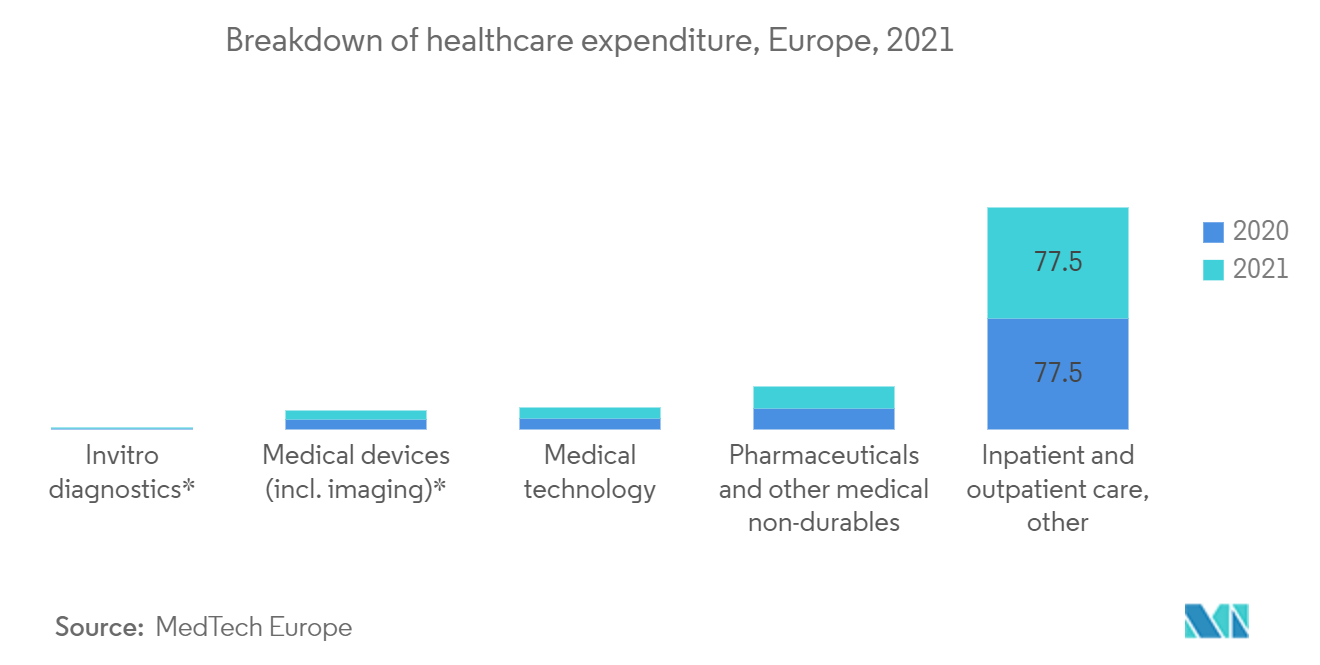Market Trends of Europe Healthcare Analytics Industry
This section covers the major market trends shaping the Europe Healthcare Analytics Market according to our research experts:
Clinical Data Analytics to Witness Significant Growth Over the Forecast Period
- A growing number of healthcare institutes and enterprises are looking to adopt clinical analytics as part of their operations to offer preventive care by effectively monitoring patient data and providing individual attention to increasing the effectiveness and efficiency of their services.
- Clinical data analytics is assured of becoming an essential tool that uses real-time medical data from eHealth to generate insights, make decisions, predict outcomes, and decrease costs by enabling early interventions for potential clinical complications. Clinical data analytics is helping healthcare providers analyze their data and initiate a shift from fee-for-service reimbursements to value-based purchasing, accountable care organizations, and value-based insurance design (VBID).
- Hospitals in Italy mostly have their computerized physician order entry (CPOE), electronic medical record (EMR), and radio-frequency identification (RFID) track & trace platforms fully operational in the country. The hospital information systems and EMRs in the Lombardy region are one of the investments provided by Italy's government.
- The increasing adoption of digital patient records as electronic medical records in the region is seeing a surge that helps organizations offer better care and analyze patients' various conditions. Thus, data from patients with hypertension, cardiovascular disease, and other chronic illnesses can be better analyzed.
- Clinical data analytics is currently part of the COVID-19 response, where healthcare organizations and the government use patient data to tackle and enable themselves to better handle crises. For example, the UK government used patient data to analyze the situation by feeding the data to machine learning and AI algorithms to strengthen government databases and assist ministers and officials in countering the pandemic.

Reduced Cost of Care and Prediction of Possible Emergency Services
- Using big data in healthcare reduces overall expenses while assisting researchers in population health data analysis and reducing the likelihood of outbreaks while treating diseases. Some examples of this kind of huge data are medical records, data from medical testing devices, hospital records, information about prescriptions, medical history of the family, personal identification information, and insurance information.
- Doctors and other medical professionals use big data analysis to effectively decide on treatments and services. Thus, it aids physicians in spotting diseases and illnesses early, when they may be treated more affordably. The usage of healthcare analytics is anticipated to increase as a result of the factors mentioned above.
- Hospital readmission carries a hefty price tag. According to HealthcareDive, Medicare spends more than USD 26 billion per year on readmissions. The Hospital Readmission Reduction Program of Medicare, which adds financial incentives to fight readmission, also subjects hospitals to severe fines. Predictive analytics in healthcare can identify patients whose characteristics point to a high likelihood of readmission so that doctors can devote more time to follow-ups and tailor discharge procedures to avoid a rapid recovery.
- Thanks to predictive analytics, healthcare organizations may identify patients at risk of acquiring chronic diseases and provide them with preventive care before the illness worsens. Through analytics, patients are given scores based on their demographics, medical conditions, age, and previous care patterns. Diabetes Care did a study that showed how predictive analytics models for healthcare could estimate an older person with diabetes's life expectancy to be between five and ten years, which let doctors make personalized treatment plans.
Predictive analytics in the healthcare sector also aid in the detection of possible population health trends. A study that employed predictive analytics to identify health trends was published in the Lancet Public Health journal. This study concluded that unless US drinking habits alter, alcohol-related liver illnesses will increase and result in fatalities.

